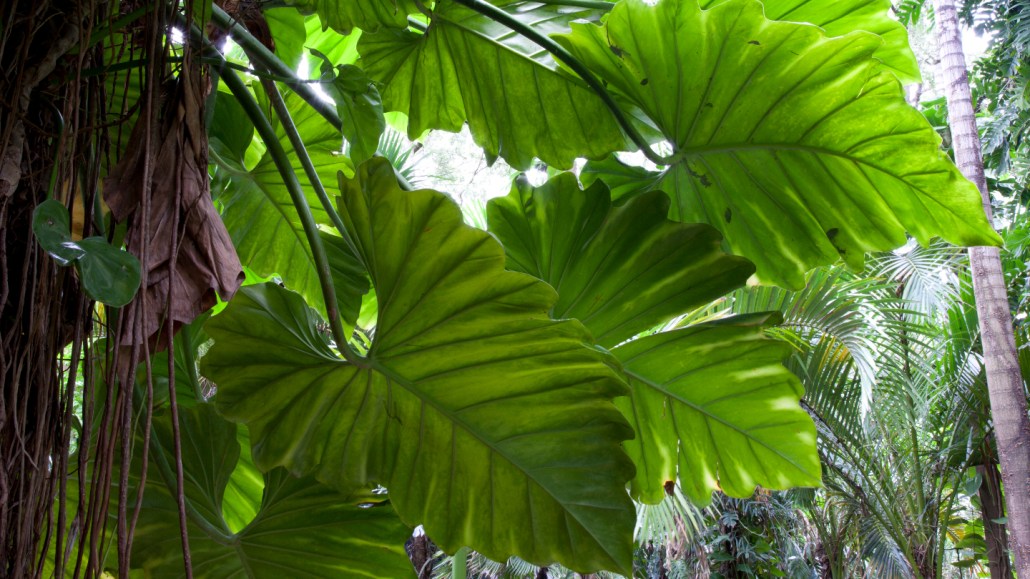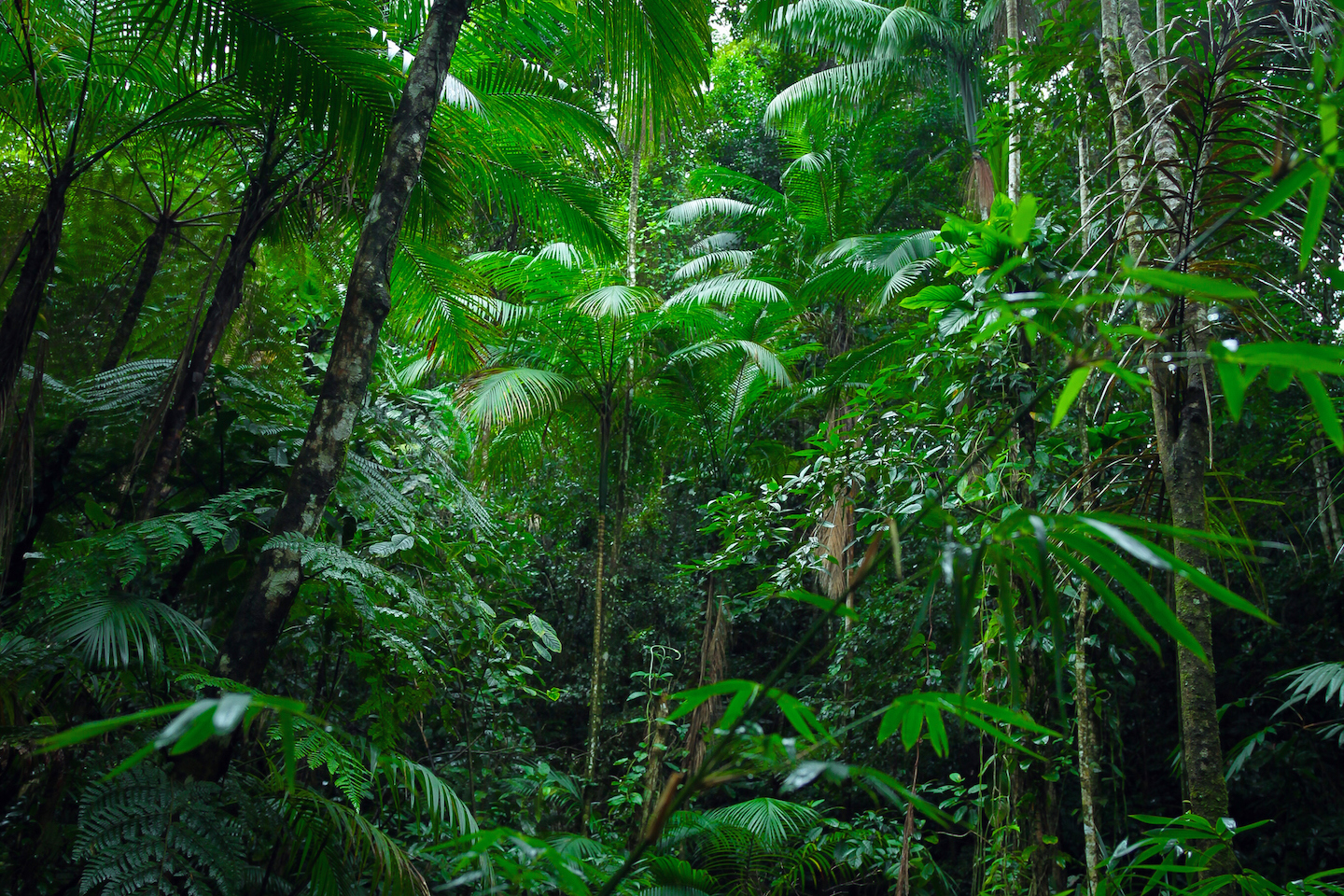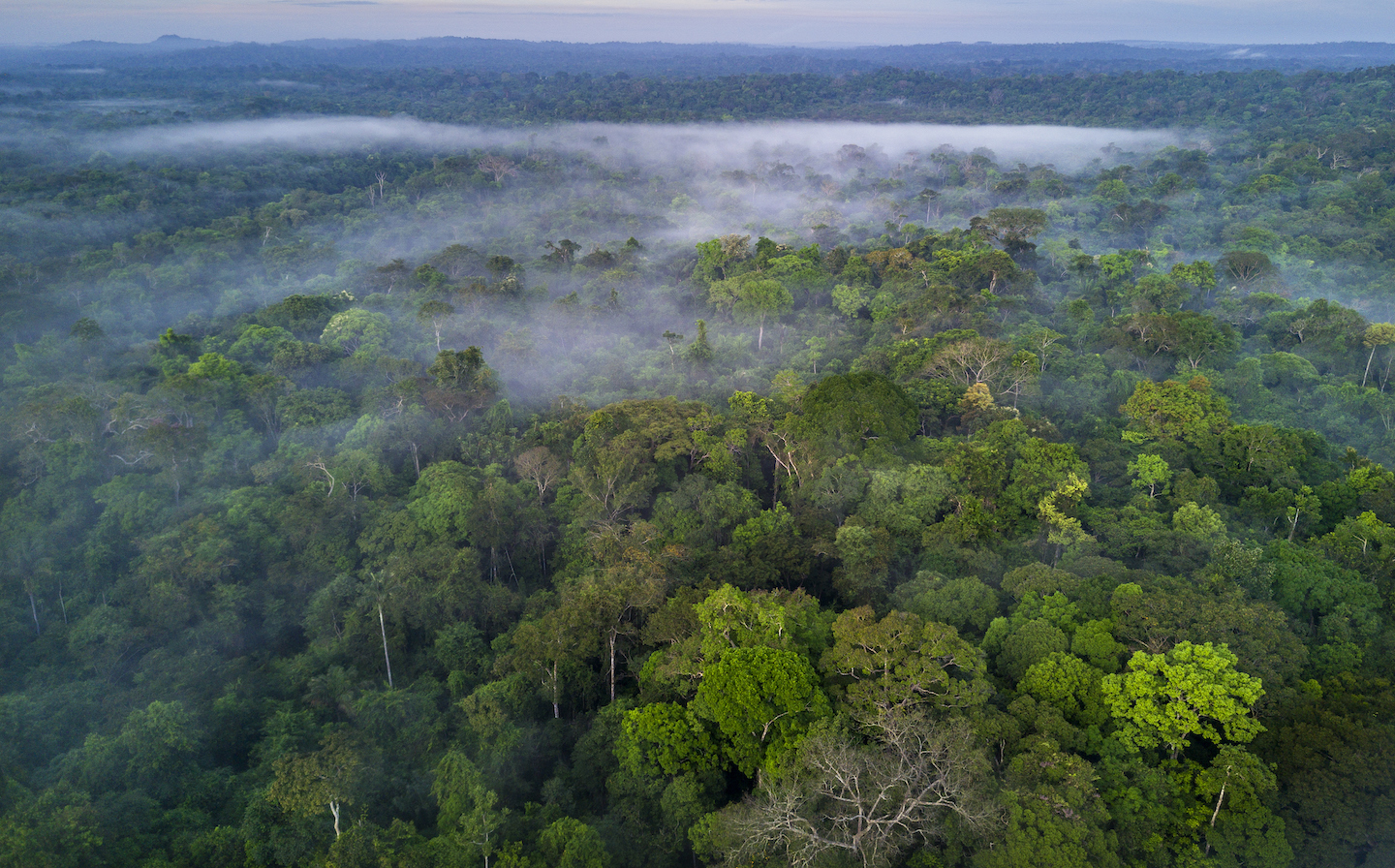Some tree leaves are finding it too hot for photosynthesis
Global warming might push entire forests to this heat limit — and possible death

Some leaves can’t handle extreme heat. In scorching temps, their proteins that convert light energy into sugars can just stop working.
Buena Vista Images/Photodisc/Getty Images Plus
Share this:
- Share via email (Opens in new window) Email
- Click to share on Facebook (Opens in new window) Facebook
- Click to share on X (Opens in new window) X
- Click to share on Pinterest (Opens in new window) Pinterest
- Click to share on Reddit (Opens in new window) Reddit
- Share to Google Classroom (Opens in new window) Google Classroom
- Click to print (Opens in new window) Print
By Nikk Ogasa
Like people, leaves can get too hot. And then they may just stop working.
Back in 1864, scientists showed the leaves of some plants could survive up to 50° Celsius (122° Fahrenheit) — but they died if they got any hotter. Now, more than 150 years later, similar findings are emerging from new studies. But they also show that leaves can stop doing their job — turning sunlight into food — before they hit that lethal zone.
In 2021, a study of 147 tropical plant species reported that the average temperature after which photosynthesis failed was 46.7 °C (116 °F).
New work finds some tree leaves experience those temps at least once a year. Those data came from tropical forests. Roughly 1 in every 10,000 leaves in their treetops regularly get too hot for work. That’s not great. But the bigger problem is that many other leaves are close to that cutoff.
If the air in tropical forests got about 4 degrees C (7.2 degrees F) above current temps, wide swaths of leaves might suddenly die. That’s the finding of new runs using a computer model.
Christopher Doughty is an ecologist at Northern Arizona University in Flagstaff. He led a team that shared its disturbing new calculations on August 23 in Nature.
“There’s a lot we don’t know,” Doughty said at an August 21 news briefing. But the science suggests, he says, that “a photosynthetic breakdown could damage entire forests if the climate warms much more.” If true, he said, Earth is near “an incredibly dire tipping point” beyond which tropical forests would vanish.
Temps were measured in trees and from the skies
Proteins in leaves convert sunlight into sugars. That’s what photosynthesis is all about. But when leaves get too hot, the machinery to do this can break down. Doughty is part of a team that wanted to figure out whether tropical forests were approaching such a heat threshold. They got some data that had been collected by the ECOSTRESS sensor aboard the International Space Station. It captures temperature data for greenery on Earth’s surface. Each data point, or pixel, covers 70 square meters (750 square feet). That’s about the area covered by two large tropical trees.
The team compared these data to measurements made in forests. Some came from an instrument in the Amazon. It had been mounted 64 meters (210 feet) up from the ground on a tower. There also were swarms of sensors taped to the bottoms of leaves in Brazil, Puerto Rico, Panama and Australia.

This analysis revealed a mix of temperatures high in these forests.
When the forests were hot and their soils dry, heat in the canopy could reach an average peak of 34 °C (93.2 °F). Still, temps varied across the trees. Some sites exceeded 40 °C (104 °F).
The comparison also turned up something ECOSTRESS didn’t: Some individual canopy leaves reached temps that far exceeded the average of their neighboring trees. Even leaves on the same branch could be different temperatures. About 0.01 percent of the time, leaves high in a forest’s canopy sweltered. They were hotter than the 46.7 °C threshold.
Data warn that trees may suffer soon
The researchers also analyzed data from leaf-warming experiments. These were carried out in Brazil, Puerto Rico and Australia. These experiments showed that for each degree of warming, the effects on trees became exaggerated.
For example, the team warmed the air around Amazon leaves by an additional 2 degrees Celsius (3.6 degrees Fahrenheit) over background temps. This caused some leaves to max out at 50.9 °C. Until then, the hottest ones there had been 42.8 °C. So raising the temperature of the air at treetop level by just 2 degrees Celsius caused some leaves there to rise by about 8 degrees C, or 14.4 degrees F. (Leaf temps can vary widely from the air temperature due to several things, including the leaf’s orientation with respect to the sun).
The team used these experimental data — along with the satellite and ground-based data — to predict the future of tropical forests under climate change. To do this, they fed computer models with a range of projected air temperatures. Those models then used data from trends seen in the past (on how forests respond to air temperatures) to make an educated guess about how tropical forests will respond in a warmer world.

Most forests could endure a warming of about 4 degrees C above current levels before they lost all their leaves and potentially died. That amount of warming might occur as early as 2100, the team’s projections indicate. Such conditions were based on a future where greenhouse-gas emissions continued to rise.
Still, there’s a lot of uncertainty. That’s in part because how various tree species adapt could depend on their genes, other pollutants, other stressors (such as drought) and more. Also unknown: how killing off certain individual leaves may push the whole tree toward death.
This new study may even overestimate how vulnerable trees are, says Christopher Still. He’s an ecologist at Oregon State University in Corvallis. The study’s authors, he notes, have assumed “that when leaves hit this critical temperature, they die.” And that’s possible, he says. However, he adds, no one yet fully understands how long it takes various temperatures to kill off the leaves on different types of trees.
Time to act?
Predicting the future of these forests will also require more insight into what’s going on well below the treetops, says Marielle Smith. She’s an ecologist at Bangor University in Wales. What’s the role of small trees and understory leaves, she wonders. After all, these “aren’t going to be as hot.”
Among tropical forests, the Amazon may be most vulnerable, the new study suggests. “There’s more trees dying [there] now than there were 10 years ago or 20 years ago,” Doughty says. “We don’t see that in Africa.” He suspects that could be because “temperatures are a bit hotter … in the Amazon than in Africa.”
Some researchers have been warning for years that climate change and deforestation could trigger large parts of the Amazon to transform into savanna and shrubland.
The new study offers “a glimpse into a potential tipping point,” warns coauthor Joshua Fisher. An ecologist, he works at Chapman University in Orange, Calif. He, too, spoke at the Aug. 21 briefing.
“It’s not saying that the tropical forests are now going to be savannas tomorrow,” he said of his team’s new analysis. But, he adds, “We can now see this insight.” And seeing that, “it means we can act.”






